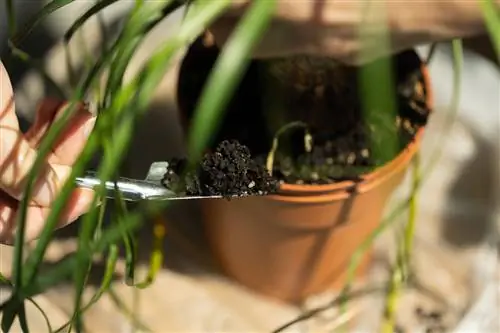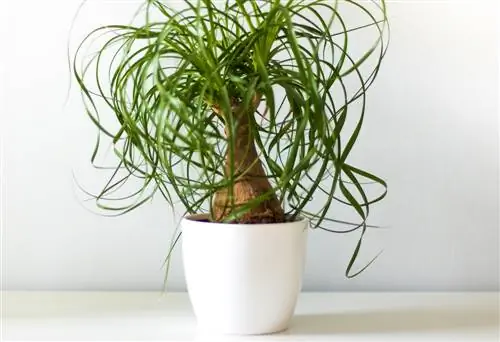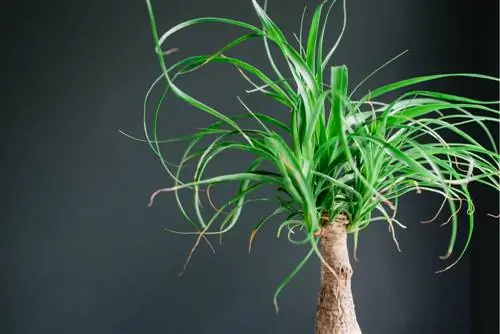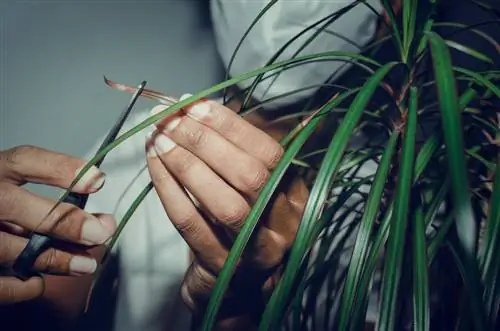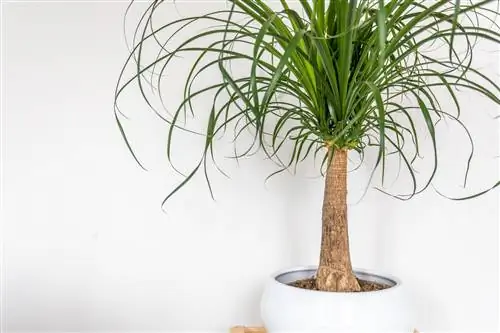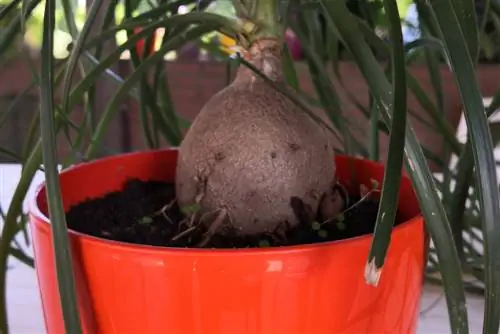- Author admin [email protected].
- Public 2023-12-16 16:46.
- Last modified 2025-01-23 11:22.
You can fight mold infestation on the elephant's foot. The use of chemical fungicides is not necessary. Read the best tips for fighting mold on Beaucarnea recurvata with home remedies here.

How to fight mold on elephant foot?
To combat mold on the elephant's foot, scrape off the topsubstrate layerand fresh soilfill upIn case of severe mold infestation, use Beaucarnea recurvatarepotAs a preventative measure, sprinkle cinnamon or bird sand onto the substrate and water the elephant's foot sparingly from below.
What are the causes of mold on elephant feet?
The most common cause of mold on the elephant's foot isoverwatering If excess irrigation water cannot drain away, mold finds ideal living conditions on the moist substrate. Initially, the surface of the soil in the plant pot is covered with a white, fluffy coating.
In the advanced stage, waterlogging and root rot occur, so that the mold spreads to the stressed elephant foot. The mold will spread rapidly if you fertilize the bottle tree with coffee grounds. The combination of moist heat and organic fertilizer promotes the growth of mold.
Which treatment method helps with mold on elephant feet?
In the early stages of mold infestation on the elephant's foot, you canscrape off the top layer of soiland replace the missing soilwith succulent soil or coconut soil. To combat remaining mold spores, sprinkle a thin layer of cinnamon onto the substrate. Cinnamon is an old home remedy that has been proven to kill fungal pathogens.
If there is severe mold infestation on the elephant's foot, promptly repotting it in permeable succulent soil helps. Before you pot the root ball, remove the moldy soil, cut off any rotten roots and clean the pot with vinegar water.
How can you prevent mold on elephant feet?
The best prevention against mold on elephant feet iscorrect watering. Two simple home remedies prevent mold spores from settling on the substrate. This is how it works:
- Water elephant foot sparingly from below.
- In summer, fill the saucer with water for 15 minutes once a week.
- In winter, water a Beaucarnea recurvata from below every 2 to 3 weeks and spray weekly.
- Sprinkle the substrate with bird sand or cinnamon.
- Only use powdered coffee grounds as fertilizer.
Tip
Save elephant foot with offshoots
Before waterlogging, root rot and mold finally destroy your elephant's foot, you can save the houseplant. The plan succeeds if the Beaucarnea mother plant has a branched crown that can be divided. Cut 15 cm long side shoots close to the trunk. Plant each cutting in a pot with moist succulent soil. The offshoots root quickly on a bright, warm windowsill.

